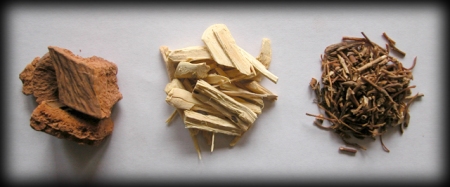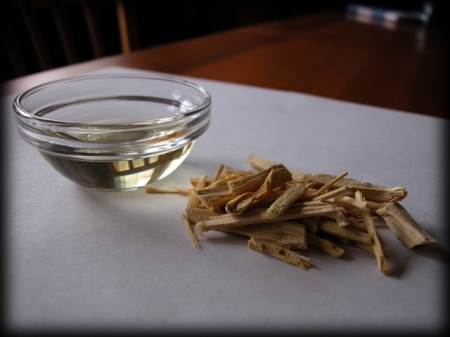A Tales of the Cocktail Follow-up
Last week at Tales of the Cocktail 2010 (already last week?) I was able to attend quite a number of excellent seminars and tastings. However the one I was most excited about in the run up was A Shot of the Black Stuff on amari and bitters. I love amari and have been really keen to improve my knowledge of their history and provenance. Some of you might remember that this was one of the seminars which I previewed before TOTC. Since the primary presenter, Jacob Briars, failed to respond to any of my email inquiries, I had to get creative which really means I just made up most of what I wrote. I was however right about one thing: this was an excellent and informative seminar and for people wanting to learn more about drinking bitters, a great and tasty introduction.
The Origin of Bitters
According to Messrs. Briars and Reaburn most all bitters as we know them today (and by extension, many aperitivi, but that’s another seminar about which I will write later) started as medicines.1 The formulation of these medicines was based on the work of the polymath Paracelsus during the 16th century, based in turn on theories of health and disease originating with Hippocrates in the 5th century BCE. The idea, which was probably not new at the time, was that ‘evil’ could be used to expel ‘evil’ and restore balance in the body. A bitter medicine, therefore, would be taken to help someone suffering from an excess of bile (AKA choleric humor), which has a bitter taste. Yum!
Briars and Reaburn were quick to point out the following:
1- Most of these medicines were totally useless.
2- Even if these medicines contained herbs today known to contain beneficial compounds, they were either not prepared in an effective manner and/or used in sufficient quantities to matter.
3- Some of these medicines contained herbs which we know are NOT very good for you.
In fact, a 19th century slang term for someone useless and apathetic was “a Stoughton bottle,” a reference to Stoughton’s bitters, generally considered good for nothing.
Despite all of this, the practice of consuming bitters as medicine continued through the 19th century right up to 1906 when the United States passed the Pure Food and Drug Act, effectively bringing it to an end.
[1] – If I understood Briars and Reaburn correctly, Carpano Antica Formula vermouth, which was invented in 1786, represents a departure from this narrative. It was created in Italy as a means by which wine could be made more stable for transport (or to mask the taste of poorer wines; you choose). While not particularly bitter in itself, Carpano contains some of the same herbs that would have been found in contemporary medicines, including wormwood, known in Germany as Wermuth, from which the name vermouth was derived.
What happens next?
Briars and Reaburn now make two assertions about the development of bitters as we know them today from their roots as medicine.
First, and some what astounding to me, what the idea that in the United Stated during the 19th century it becomes common for people consuming bitters to mask the awful flavor of these medicines with whiskey and sugar. Sounds familiar? We know that cocktails began life as ‘morning after’ tonics so this hardly seems that far fetched.2 Over time these medicinal (or drinking) bitters would have changed to become the accent flavorings we use by the dash in modern cocktails. (Sodas, originally compounded by a pharmacist, are the other means by which the flavors of medicines could be made more palatable, ultimately without the alcohol or even the medicine, i.e. soft drinks.)
Second, in Europe, bitters get taken in another direction. First, by becoming better formulated it becomes possible to consume them (more or less) directly. Second, so-called drinking bitters become associated with food as a class of beverage to complement a meal. Those formulated to stimulate an appetite become aperitivi, such as vermouth and the quinas, to be enjoyed before a meal. Those designed to aid digestion, become digestivi and amari, to be drunk after eating.
[2] – Two things puzzle me about this assertion: first, most of these bitters contained a godawful lot of alcohol already, their most effective ingredient, so mixing them with even more alcohol to mask their flavor seems odd. Second, we would expect to find drink recipes from the time which called for significant amounts of bitters. I am not aware of these.
Enough history already! What did you get to taste?
Carpano Antica Formula vermouth
Averna amaro
Luxardo Albano amaro (distinctly more bitter than the Averna)
The Bitter Truth Elixier (not yet available in the US)
Fernet Branca
Braulio amaro (an alpino style amaro)
There was also a horrible homemade bitters of some sort from Mr. Reaburn, which I seem to recall contained mouthwash, followed by a sample of a horrible Reishi mushroom slurry, possibly by Mr. Briars.
What my words can’t convey…
To say that this seminar was “presented” by Jacob Briars and Sebastian Reaburn is to undersell what was in no small measure a great bit of entertainment. I would have needed a video camera to properly capture it. If I am ever asked to give a seminar, and one day I hope I am, I know how high the bar has been set and by whom. (I better start working on my Kiwi accent now!)
(Sorry the picture isn’t better!)




















